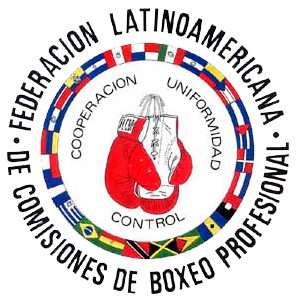The boxing is a combat sport that, and no matter its physical structure, technique, tactics and its psychic demands, its main actions are attack and defense. In other words, boxing actions are hitting and try no to be hit, which are very complex actions that demand a great development of the boxer’s coordination. The coordination is the boxer’s ability to determine the preparation, direction capacity or good regulation of the motive action. This capacity is reflected by the choosing and execution of the needed actions that will allow him to solve the motive tasks in a correct, quick and ingenious way, specially those that arise unexpectedly as it usually happens in boxing.
In the sportsman physical preparation, there are six (6) basic motive qualities that are not shown in their pure state before a combat, but in complex interaction, which are force, speed, power, resistance, flexibility and coordination.
Nevertheless, at the moment the boxers and trainers focus their training toward the development and improvement of the power (force-quick), the resistance and in very low frequency towards flexibility, obviating the coordination as the basic element for a combat sport (box), that presents high demands on the analysis of both boxers movements in the space and the time. These analysis demands of his own movements as well as the opponent’s are the bases for the wonderful art of attack and defense.
It is true that power (force-quick) and resistance are necessary to hit strong. But, this is not everything the boxer needs to go through the 1st and the 10th or 12th rounds, because the fight implies a very good development of the arms, trunk and legs coordination of movements that assures the boxer the successful attack, defense and counterattack. He is required to master not only an excellent notion of the distance of the opponent, but also to have the dimensions of the ring for his better movements, even when he is very tired.
This coordination of movements, notion of the distance and dimension of the ring are mainly provided by the development of the sensor vestibular system (vestibular apparatus). Here, it is necessary to highlight that the determination of the position and the displacement of the body and its position in the space takes place with the jointly participation of different organs of the senses: the sight, the receivers of the tact, the receivers of the sense mioarticular, the sensor vestibular system, etc.
The vestibular apparatus is an organ that plays an important paper in the regulation of the position and movements of the body in the space. The peripheral part of the vestibular apparatus is located in the internal ear and it is composed by the vestibule (threshold) and three semicircular conduits, the interior of which is full of a liquid called endolymph.
In the vestibule there is the otolith apparatus that is an accumulation of receptive cells, from which special filaments that are connected forming the otolith membrane. In the surface of this membrane are located some calcareous glasses (of lime) or otolith which change their pressure on the membrane when the body changes the position or when a rectilinear acceleration takes place, causing the excitement of the receivers and the producing of nervous impulses. These impulses are transmitted to the cerebral marrow (encephalon), where it is analyzed, synthesizes and the corresponding motive answer is elaborated.
The receptive cells of the semicircular conduits also possess special filaments, submerged in a jellied mass that is in the endolymph.
Due to the fact that those semicircular conduits are located in three-plane inter connected, any turning of the head or movement of the body with rectilinear or angular acceleration makes endolymph moves in the semicircular conduits, which is immediately registered by the receivers.
The boxer, for the regulation and keeping of the posture and balance, mainly after the impacts received in the head, uses the impulses of the vestibular apparatus.
Referential Outline of the Sensor Vestibular System Importance in Boxer
Boxing is based on the attack and the defense or hitting and not to be hit actions.
The attack and the defense actions are based on the precise analysis of the movements of the boxer and his opponent in the space and the time.
The temporospatial analysis of the boxer and his opponent movements, the notion of the distance of the opponent (orientation in the space) and the expedite form of moving (rhythm), are some of the main criteria that determine the coordination quality.
Parallel to the sight, the tact receivers and mioarticular sense, etc., the basis of an excellent coordinative capacity is the high development and improvement of the vestibular apparatus.
Why is it important a good vestibular stability in Boxing?
To know the exact distance of the opponent for the effective placement of blows without failing or being taken down.
A high level of coordination of the head, trunk and arms movements for the defense.
Excellent defense, given by the good location in the space that allows the different displacements in the ring without any problems without losing the control of the sight (mainly the displacements back).
To minimize the negative effects produced by the opponent’s impacts in the head.
It allows the boxer’s immediate or quick recovery after a knockdown.
It is worth mention that the ring is a very small space for 24 minutes in 8 rounds and 36 minutes in 12 rounds, if the average steps given by the boxers are considered. It prevents them from making a variety of movements, but it can be overcome by a high development of space and rhythm orientation.
The blows to the head produce the moving of the otolith, decreasing the precision of temporospatial information of the boxer in the ring, as well as the body segments (head, arms, legs) with regard to itself and to the space, producing loss of the balance and the dizziness. In other words, this blows produce disorientation or accumulative loss of the notion of the fight, and this situation that can be decreased to its minimum expression with a high level of development of the vestibular system.
A well-trained vestibular apparatus is one of the most important helping elements in the process of assimilation of the technical habits.
How can a good vestibular stability be achieved in boxing?
The state of preparation of the vestibular apparatus is determined by two conditions: 1. Sensibility – the capacity to perceive the minimum stimulus, to appreciate it and to carry out the correct answer effectively; 2. Stability – the capacity to counteract big and lingering vestibular stimuli, in function of the correct execution of the motive tasks.
The development and improvement of the vestibular stability is achieved with trainings that include programs of special exercises, directed to develop the rhythm, the precision, the orientation in the space, the status-dynamic balance and the coordination of movements with repetitions of different exercises (example: blows, jumps) under a rigid code of high coordination. Below there are some examples of special exercises that are not the only ones, but starting from these many others of similar structure can be created:
Walk on tiptoe forward and backwards on an 8-10 mts. long line over an irregular surface (sand, rubber foam mattresses, elastic beds) over benches, gymnastic rails of balance, ponies, plinths, etc. Also to execute under the limited control of the view, in and out of the ring.
Stand on tiptoe, making equilibrium on one leg (left, right) Arms positioned on the waist, side by side, up. Each position has to be kept for at least 10 seconds with eyes closed. Make them over benches, gymnastic rails of balance, ponies, plinths, and over mobile objects.
Acrobatic exercises: of foot, jumps with half turn (180º), with a turn (360º) and more; make 8-10 turns to the right and left three times in horizontal position; 4-6 tumbles ahead and behind three times; two tumbles ahead extended jump with half and a turn; tumble jump with turn of 180º-360º tumble ahead (behind).
Turns suspended in the gymnastic rings to the right and left, with inclination of the head to the front and to the back as well as to each side. To keep track of the consequences of the turns, it is necessary that after you do them you walk straight over a 6-meter-line.
Inverted position: in the scapulas, of head, of hands, with help and by itself, with open and closed eyes.
Closing your eyes helps you develop the vestibular analyzer.
It is necessary to point out that the vestibular apparatus manages to fulfill its tasks when the trainer worries about the diversity of the special trainings, emotional saturation of the exercises and for the technical part of its execution.
Thank you very much.
















